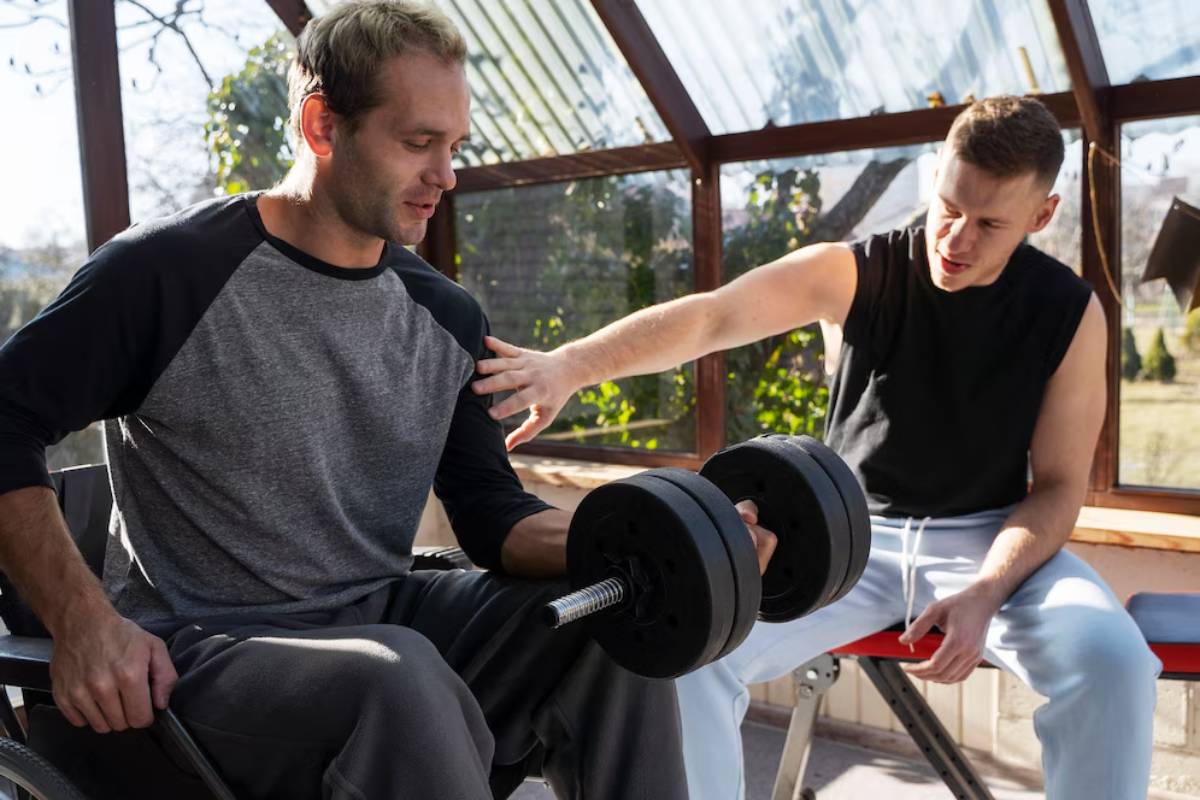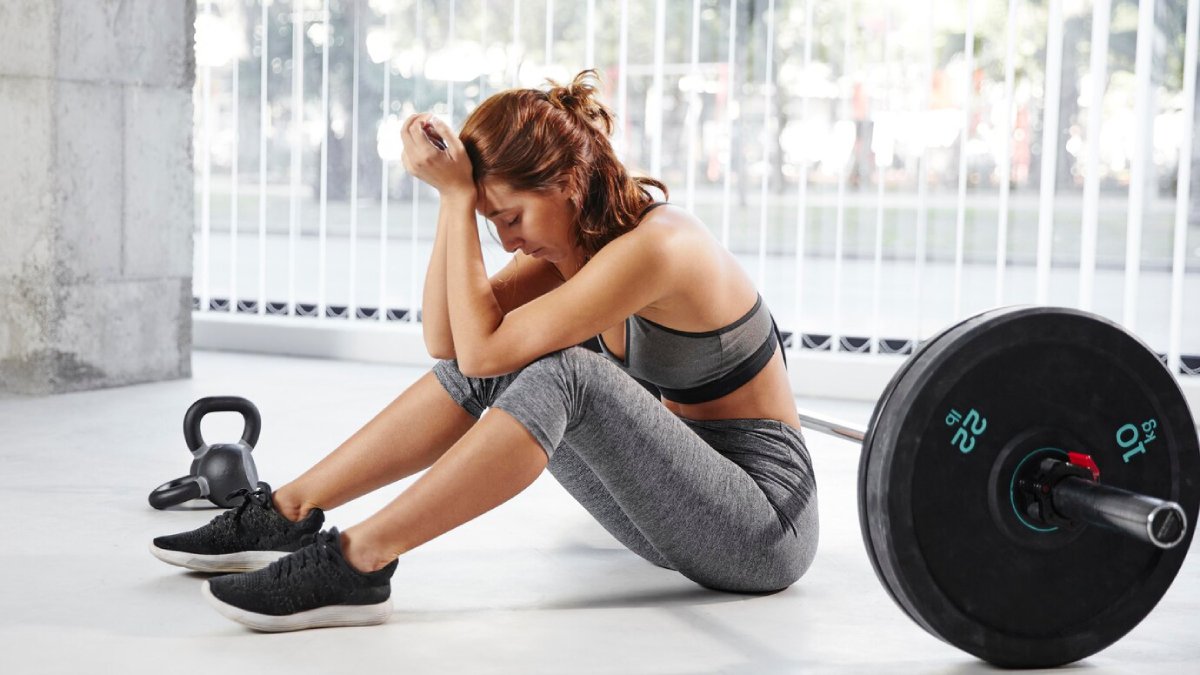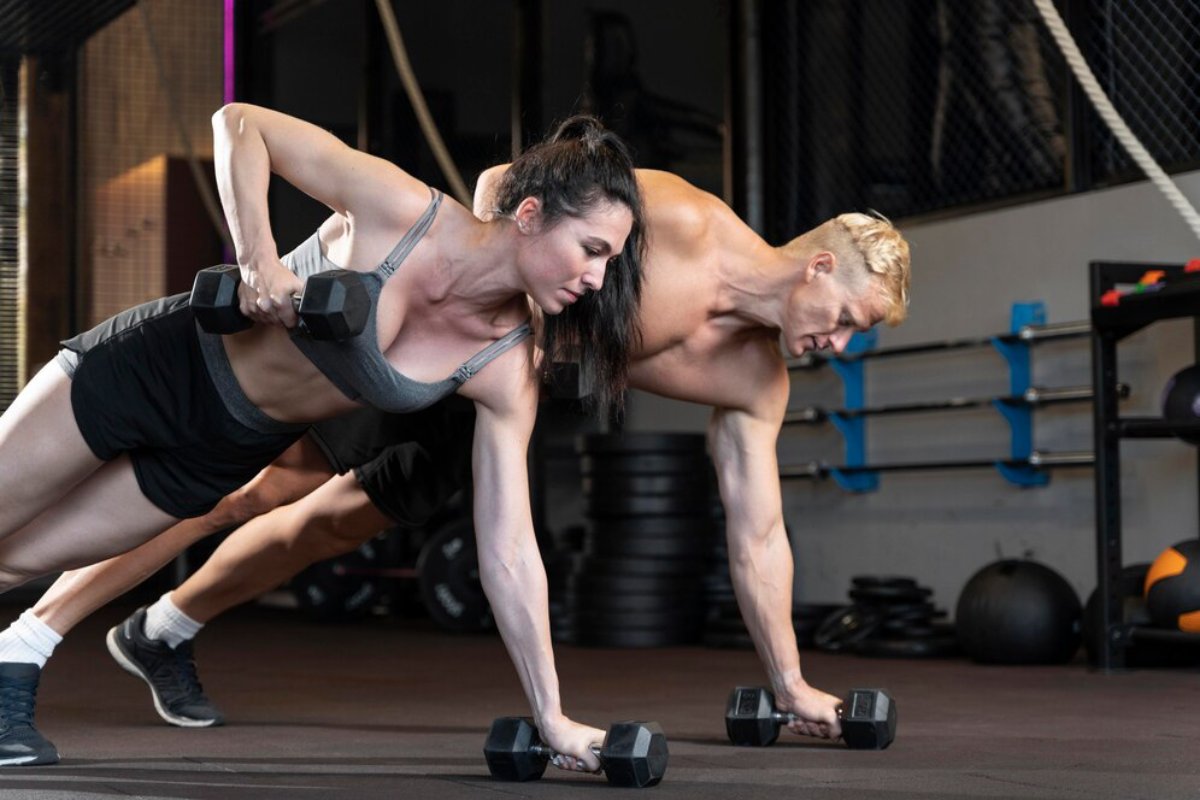
Compound vs Isolation Exercises for Muscle Growth
In the quest for muscle mastery, a debate brews: compound versus isolation exercises. Each type plays a vital role in sculpting a powerful physique. To unlock your potential, consider their unique benefits and best applications. By mixing both into your workout, you can turn slow progress into excellent results. Every rep counts, and knowing how to calculate your gains can change the game.
Whether you’re a beginner looking to add size or an experienced lifter aiming to break through a plateau, mastering the balance of compound and isolation movements is key to long-term success.
Understanding the Basics
What Are Compound Exercises?
Compound exercises are multi-joint movements that work for multiple muscle groups at once. Examples include:
- Squats
- Deadlifts
- Bench Press
- Pull-Ups
- Rows
- Overhead Press
These exercises work multiple joints and muscles. So, you can lift heavier weights and engage more of your body.

What Are Isolation Exercises?
Isolation exercises, on the other hand, target a single joint and a specific muscle group. These movements are typically used to develop muscle definition or bring up weaker areas. Examples include:
- Bicep Curls
- Leg Extensions
- Tricep Kickbacks
- Calf Raises
- Lateral Raises
These movements are great for targeting specific muscles. They help you achieve symmetry in your physique.
The Role of Compound Movements in Muscle Growth
Compound exercises are the cornerstone of any serious training regimen. Why, you ask? They work many muscle groups. This sparks hormonal activity and activates more muscle fibres.
Benefits of Compound Exercises
- Hormonal Advantage: Studies show compound movements release higher growth hormone levels and testosterone.
- Time Efficiency: You engage more muscles in fewer exercises.
- Functional Strength: They mimic real-world activities, improving athletic performance and everyday mobility.
- Caloric Burn: Activating more muscles burns more calories. This helps with fat loss and conditioning.
Best Compound Exercises by Muscle Group
- Legs: Squats, Lunges, Deadlifts
- Chest: Bench Press, Push-Ups
- Back: Pull-Ups, Bent-Over Rows
- Shoulders: Overhead Press, Upright Rows
These exercises are your stepping stones to greater strength. Gradually lifting more weight is key for muscle growth or hypertrophy. Consistently adding weight transforms compound lifts into powerhouses of mass and strength. With each rep, you build the foundation of a robust physique.
The Importance of Isolation Movements
Compound exercises build strength and mass. Isolation exercises fine-tune your physique and fix imbalances.
Why Use Isolation Exercises?
- Target Weak Points: Isolation helps zero in if your triceps are holding back your bench press or your rear delts need work.
- Aesthetic Shaping: Bodybuilders use isolation work to bring symmetry and roundness to muscles.
- Rehabilitation: Isolation can help rebuild strength in specific areas post-injury.
- Mind-Muscle Connection: Focused movement enhances the neurological connection to muscles.

Ideal Isolation Movements for Growth
- Biceps: Concentration Curls, Preacher Curls
- Triceps: Skull Crushers, Rope Pushdowns
- Delts: Lateral Raises, Front Raises
- Quads: Leg Extensions
- Hamstrings: Leg Curls
In hypertrophy-specific programs, isolation exercises play a key role. They are used as finishers after compound lifts or included in specialised splits.
When to Use Compound vs Isolation Movements
An innovative training plan doesn’t choose one over the other—it integrates both.
For Beginners
Beginners should focus on compound movements. They help build strength and train basic motor patterns. Isolation work can be introduced later to address weaknesses or for variation.
For Intermediates and Advanced Lifters
Experienced lifters can gain from using push/pull/legs or upper/lower splits. Compound lifts provide the stimulus; isolation refines and balances development.
Example Split: Push Day
- Bench Press (Compound)
- Overhead Press (Compound)
- Incline Dumbbell Press (Compound)
- Lateral Raises (Isolation)
- Tricep Rope Pushdowns (Isolation)
This ensures that your body’s heavy hitters are pushed to their limits. It also helps the smaller, often overlooked muscles get stronger.
Program Design Tips
1. Prioritize Compound Lifts Early in the Workout
Your central nervous system is most alert at the start of a workout. This is the best time for heavy compound lifts.
2. Use Isolation for Volume and Burnout
End with isolation exercises. They tire specific muscles and boost blood flow, which helps with hypertrophy.
3. Consider Your Goals
- Strength Goal: Emphasize compound movements, 3–5 sets of low reps (3–6).
- Hypertrophy Goal: Balance both, 3–4 sets of moderate reps (8–12).
- Endurance Goal: Higher reps (12–15+), often with isolation movements.
Common Mistakes to Avoid
- Neglecting Isolation Work: Too much focus on compound lifts can lead to imbalances.
- Avoiding Isolation: Doing curls and tricep kickbacks won’t help you gain size or strength.
- Improper Form on Compounds: Lifting too much weight on squats or deadlifts with bad form can result in injury.
- Not Progressively Overloading: You won’t see gains from compound or isolation work if you don’t add weight or reps.

Recovery and Nutrition Matter
To witness gains from your workout, recovery and nutrition are paramount. No matter how brilliant your plan is, without them, results fade. Compound lifts tax your nervous system, demanding respect and time. Give your body the rest it craves, protein, and calories for rejuvenation. With proper care, you’ll sculpt strength from sweat into triumph.
- Protein Intake: Aim for 1.6–2.2g per kg of body weight.
- Sleep: 7 to 9 hours of restful sleep supports muscle repair and performance.
- Hydration: Essential for joint health and muscular function.
Final Thoughts: Build Smart, Not Just Hard
Compound and isolation exercises are allies, not adversaries, in your fitness toolkit. Think of compound movements as mighty engines, driving efficiency and building strength. They pack on muscle size with every rep, propelling you forward. Isolation exercises are like a sculptor’s chisel. They help shape and refine your physique. They balance and polish every contour, ensuring you shine brighter in every way. Together, they create a harmonious symphony of strength and aesthetics.
For lasting muscle growth, unlock the power of balance and dedication. Stitch together smart programming, recovery, and unwavering consistency. This golden trifecta fuels every ambition—be it strength, aesthetics, or performance. Embrace the journey for results that truly stand the test of time.


